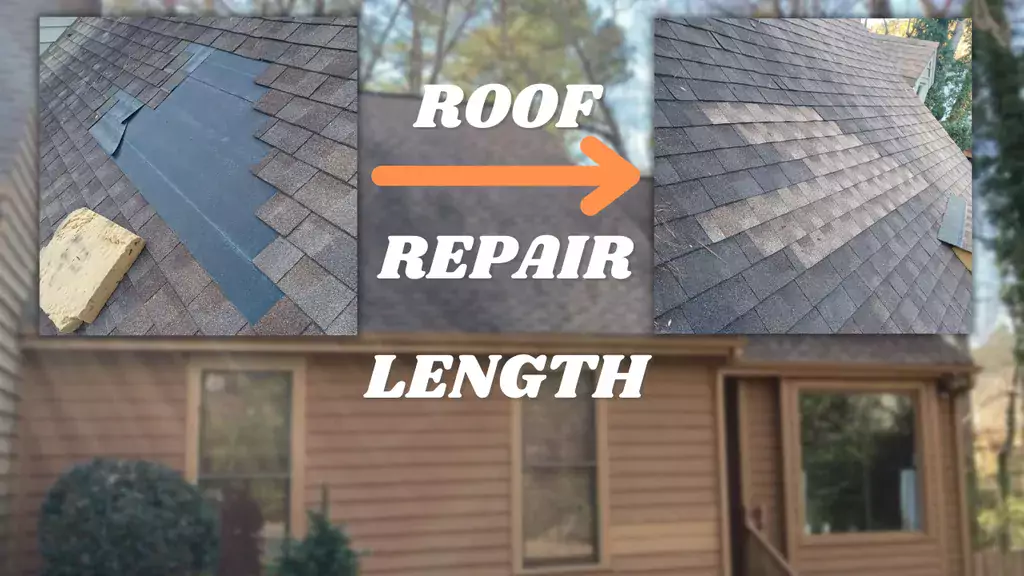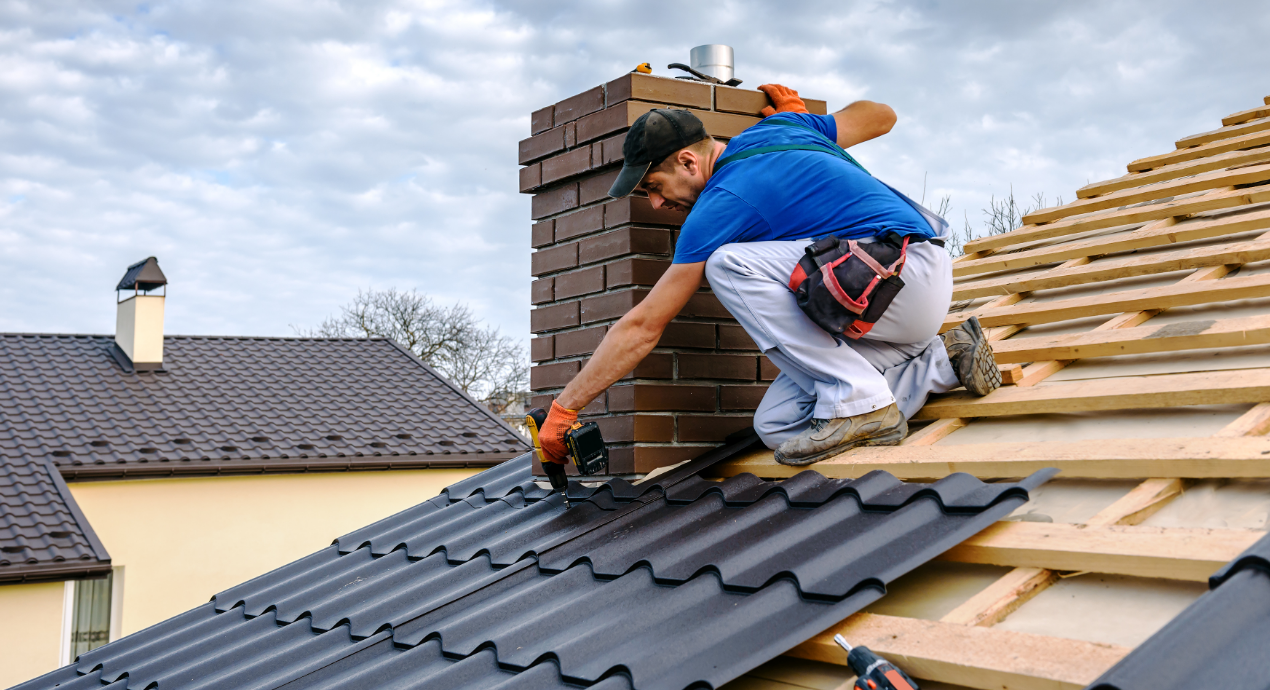Understanding the Different Sorts Of Roofing Systems: A Comprehensive Guide for Homeowners
In the world of homeownership, choosing the proper roof covering design is a choice that lugs substantial effects for both functionality and aesthetic appeal. With a range of choices-- ranging from the conventional gable to the contemporary flat-- each type presents distinct advantages and obstacles that should align with the homeowner's specific needs and ecological factors to consider. Understanding these differences not just help in making an educated choice but additionally affects long-lasting maintenance and energy efficiency. As we explore the complexities of various roof types, it becomes evident that one dimension does not fit all; the right selection might shock you.
Saddleback Roof
Saddleback roofs, defined by their triangular shape, are amongst the most preferred roof styles because of their simplicity and performance in dropping water and snow. This design includes two sloping sides that fulfill at a ridge, permitting efficient drainage and decreasing the risk of water build-up. The steep pitch generally linked with saddleback roofs improves their capacity to handle heavy rainfall, making them ideal for various climates.
Along with their practical benefits, saddleback roofs supply aesthetic adaptability. They can be adjusted to numerous architectural styles, from standard to modern homes. The design can also suit added features such as dormer windows, which improve natural light and air flow in the attic room space.
Furthermore, saddleback roofs offer enough space for insulation, contributing to energy efficiency. House owners can select from a variety of roofing materials, consisting of asphalt tiles, steel, and tiles, even more improving modification options.
Despite their advantages, saddleback roofs may require extra assistance in areas susceptible to high winds or heavy snowfall. In general, the saddleback roof stays a preferred option due to its mix of capability, resilience, and visual allure.
Apartment Roofs
Level roof coverings are commonly acknowledged for their minimalist design and practical applications, specifically in industrial and business settings (oahu roofing). These roofings feature a almost horizontal or straight surface, which allows for very easy building and flexible space application. While they may lack the visual charm of pitched roofs, level roofings offer countless benefits, especially in city atmospheres where making best use of area is essential
Among the primary benefits of level roofs is their access. Homeowners can use the roofing room for numerous purposes, such as rooftop yards, terraces, or solar panel setups. Additionally, level roofing systems are typically extra affordable to mount and maintain compared to their sloped equivalents, as they require fewer products and labor.
However, level roof coverings do present particular challenges. Appropriate drainage is crucial to avoid water merging, which can bring about leaks and structural damages. Hence, selecting high-quality waterproofing materials and routine inspections are crucial for making certain durability. Usual materials made use of for level roofs consist of built-up roofing (BUR), customized bitumen, and single-ply membrane layers, each offering distinctive advantages. Generally, flat roofings work as a functional and adaptable option for numerous house owners and companies alike.
Hip Roofings
Hip roofings are defined by their sloped sides that assemble at the top, creating a ridge. This layout stands out from gable roof coverings, as all 4 sides of a hip roofing slope downwards toward the walls, providing an extra steady structure. The angle of the slopes can vary, enabling flexibility in building aesthetics and capability.
Among the main advantages of hip roof coverings is their capability to endure heavy winds and adverse climate problems. The sloped surfaces make it possible for better water drain, lowering the danger of leaks and water damages. Furthermore, hip roofings offer raised attic space, which can be used for storage or also exchanged habitable areas.
However, constructing a hip roof covering can be much more complex and expensive than easier roof covering types, such as saddleback roofs. The extra product and labor involved in developing the inclines and ensuring correct structural stability can lead to higher expenditures. Despite these downsides, many house owners favor hip roofing systems for their resilience, visual allure, and potential for energy performance.
Mansard Roofs
Mansard roofing systems, usually recognized by their special four-sided design, feature two inclines on each side, with the reduced incline being steeper than the upper. This architectural style, stemming from France in the 17th century, is not just cosmetically appealing but practical, as it takes full advantage of the useful great site room in the upper floors of a building. The steep lower slope permits even more clearance, making it an excellent choice for lofts or attics, which can be converted into living areas.
Mansard roofing systems are defined by their convenience, suiting numerous building designs, from typical to modern-day. They can be created with various products, consisting of asphalt roof shingles, slate, or metal, supplying house owners with a variety of choices to fit their budgets and preferences. Additionally, the layout enables the assimilation of dormer home windows, improving natural light and ventilation in the top degrees.
Nevertheless, it is vital to think about the potential drawbacks. Mansard roof coverings might need more upkeep as a result of the intricacy of their design, and their high slopes can be testing for snow and rainfall drainage. Generally, mansard roofs integrate elegance with functionality, making them a preferred selection amongst property owners seeking distinctive building attributes.
Lost Roofings
As property owners increasingly look for simplicity and capability in their architectural layouts, dropped roofs have actually emerged as a popular option. Characterized by a solitary sloping plane, a shed roof covering provides a minimal aesthetic that enhances different home designs, from contemporary visit this page to rustic.
Among the primary benefits of a shed roof is its simple building and construction, which frequently converts to lower labor and material expenses. This layout enables efficient water drainage, lowering the risk of leaks and water damage. Furthermore, the upright incline provides sufficient room for skylights, boosting all-natural light within the interior.
Shed roofings additionally offer flexibility in terms of usage. They can be successfully incorporated right into additions, garages, or outdoor structures like structures and sheds. In addition, this roof style can accommodate various roof products, including metal, asphalt roof shingles, or perhaps green roofing systems, lining up with eco-friendly efforts.
However, it is necessary to think about regional climate conditions, as hefty snow lots might demand changes to the roofing's angle or framework. Generally, dropped roofings present a practical and aesthetically pleasing option for homeowners aiming to make the most of functionality without compromising design.
Final Thought


Gable roof coverings, characterized by their triangular shape, are amongst the most preferred roofing styles due to their simpleness and performance in shedding water and snow. oahu roofing. The steep pitch typically linked with gable roofs enhances their capability to manage hefty rainfall, making them suitable for various climates
While they may do not have the visual allure of pitched roofings, level roofing systems provide numerous advantages, particularly in city settings where taking full advantage of room is critical.

Comments on “Roofers Oahu: Professional Roof Installations and Fixes”